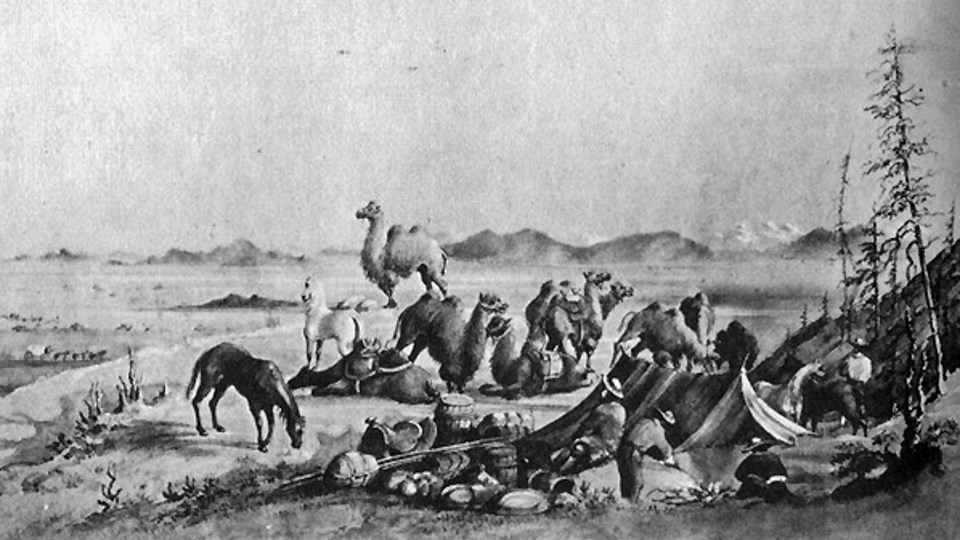
On March 25, 1859, after a grueling four-month evaluation period concerning the use of camels, the new Secretary of War, John B Floyd, directs a reconnaissance of the harsh and inhospitable area between the Pecos River and the Rio Grande. This action is taken not only to locate appropriate areas to establish forts along the Rio Grande, but also to determine the camels’ feasibility for use in restocking outposts in the brutal Southwest. Brevet Second Lieutenant William E Echols of the Army Topographical Engineer Corps is chosen to conduct the reconnaissance, while Second Lieutenant Edward L Hartz commands the escort. On July 11, 1859, Lieutenants Echols and Hartz begin their expedition from Camp Stockton (now Fort Stockton) to San Vicente, Texas, following what is known as The Comanche Trail. This route takes the party due south through Persimmon Gap and down to Tornillo Creek, where they then head southeast toward the San Vicente crossing on the Rio Grande. Following a week-long exploration and mapping of the area between Boquillas and Mariscal canyons, the expedition returns northward to make a report. Despite a glowing report on the camels’ behalf, Hartz’s superiors are not at all satisfied with the results presented. What is glaringly absent are recommendations for a fort along the Rio Grande, the very thing the expedition was sent out there for. Colonel Robert E Lee, then in command of the Texas Department, decides to order yet another reconnaissance expedition to West Texas, to be conducted the following year. This second expedition, headed solely by Lieutenant Echols, departs Camp Hudson on the Devil’s River on June 24, 1860, with his camels and thirty-six soldiers. This time around, Echols takes a much different route, heading west to Fort Davis before angling the caravan southwest to Presidio del Norte. Once there, he heads his train east until he reaches Lajitas. Echols then selects a route parallel to the Rio Grande and follows it to the mouth of majestic Santa Elena Canyon, where he decides to set up camp in the area now known as Castolon. After a brief rest, Echols resumes his easterly course and follows the Rio Grande to its meeting with Alamo Creek. It is here that Echols finds what he is searching for – the ideal place on the river upon which to build a fort. Echols’ troops set about surveying and mapping the entire area, satisfied that they had fully achieved their goal at last. Echols and his crew then return to Fort Davis to file a report on his findings with his superiors. |
Last updated: August 17, 2020
